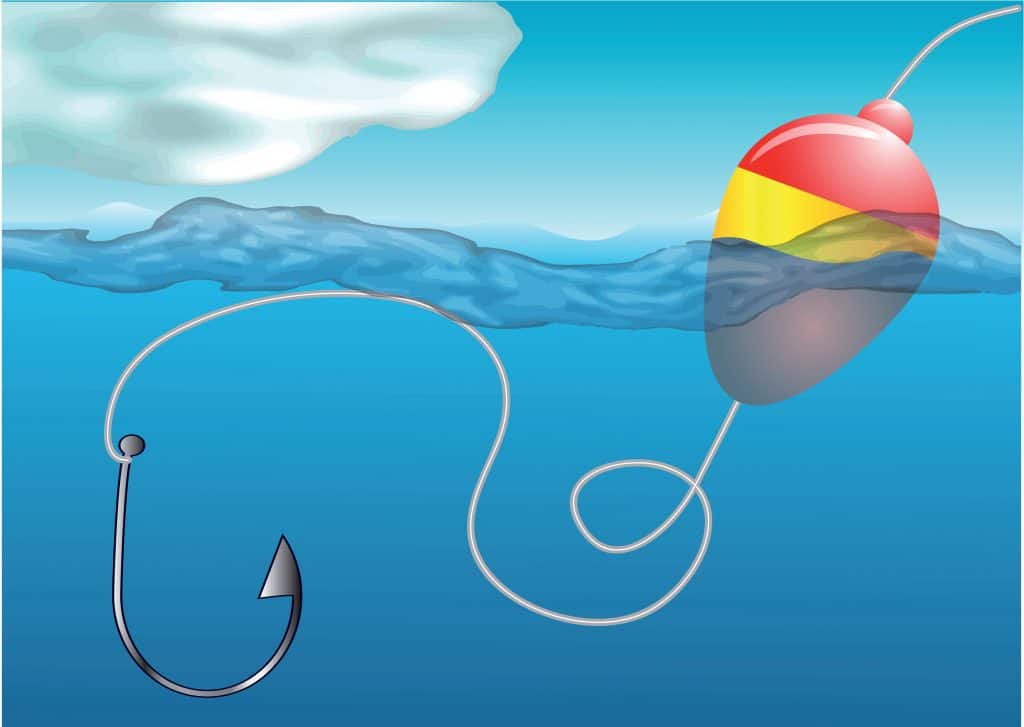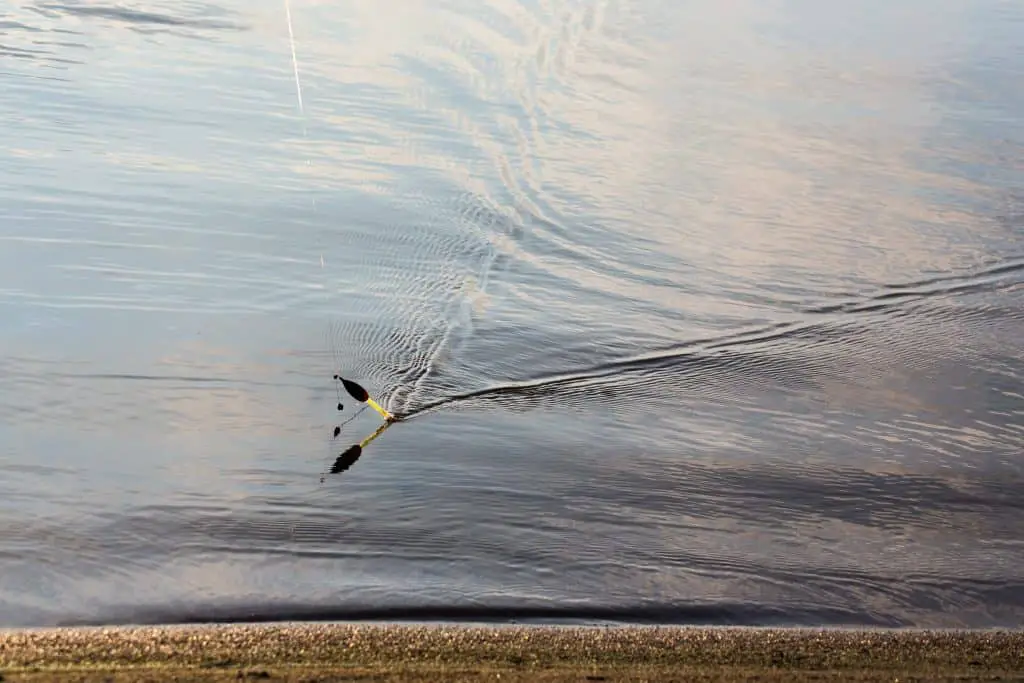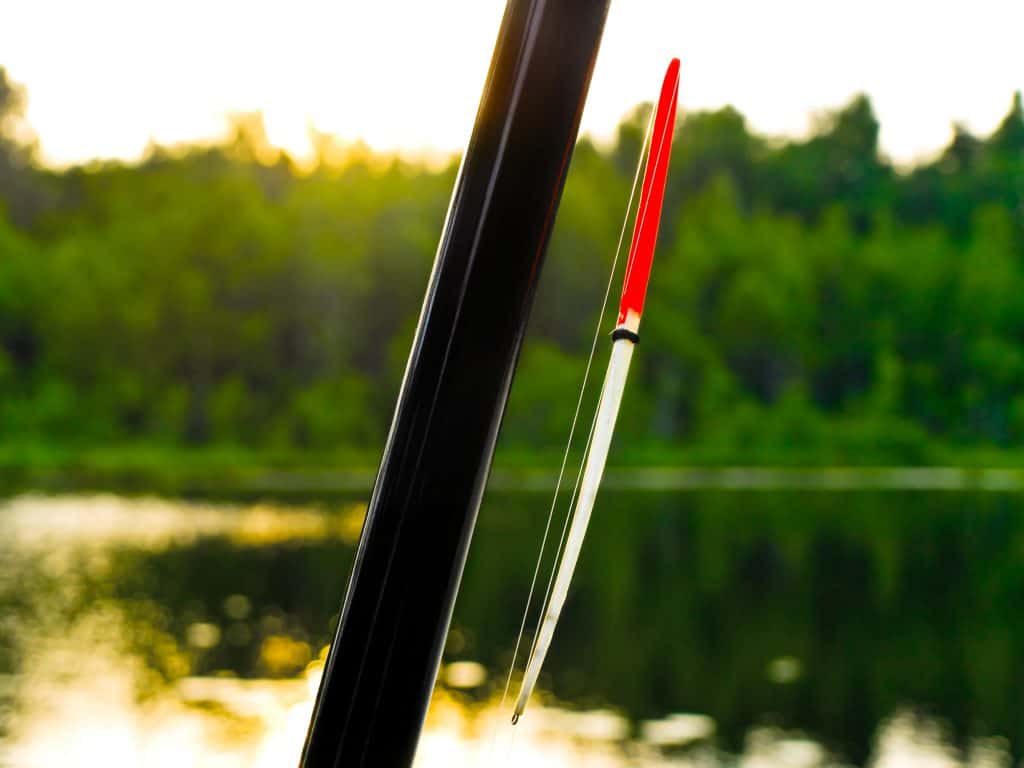Float fishing is a great way to spend your day on the lakes or a river! It’s relaxing, and with the help of these float fishing tips for beginners, you can catch some really big fish. In this article, we will discuss the best ways for beginners to get started with float fishing.
Before the first fishing trip
Catching fish with a float rod is a great idea for any aspiring angler! Unlike bait fishing, with float fishing, there is no need for any baits like worms or corn – just cast out your line and wait. Watch as it dances around in the water until something takes an interest.
That being said, you are likely to catch more fish with your fishing floats when there is some bait attached. The best bait for float fishing is usually shrimp, small baitfish or night crawlers. Live bait generally generates more bites.
Some people also like to bait their hooks with worms while others will prefer using artificial lures. The most popular bait for float fishermen is actually earthworms, though it might not be the one helping you catch fish the most.

Which fish are you going to target?
Always research what kind of fish you’re trying to catch before heading out on the water! Walleye? Pike? Trout? Even for trout there are differences between rainbow trout, lake trout, bull trout and tiger trout. The best way to find out is by reading about the fish beforehand.
What type of fishing are you planning to do?
Bring the appropriate gear. If you’re going to be fly fishing in a river with a fly rod, bring the reel and line that are best for catching your target fish. But fly fishing is just one option. You can also use a spinning rod with bait and a reel.
The right gear and tackle for float fishing includes a boat or kayak (optional), tackle box, landing net, fishing rod and fishing reel and of course fishing floats. Other things I recommend bringing include extra coolers for ice, beer and food, insect repellent and a tent for shade and to sleep in. If possible bring some type of light source if you plan to fish at night. Also, bring your own chair! Float fishing can be tiring so feel free to bring something comfortable.
Finally, bring snacks so you have something to eat while waiting around for a bite. Whenever possible pack food items in containers rather than bringing canned drinks or other liquids. This way you won’t have to worry about spilling anything in your boat and it will be easier for the person driving too.
Fishing line for float fishing
As a general rule, your main line should be about 15-foot long, but the length of your main line largely depends on what size and type of bait you are using. You will also need to have at least 20 feet or more of secondary line for each fishing rod. If this is too much cord, use braided cotton fishing lines such as Spiderwire®, Berkley®, or FireLine®.
The fishing line should be as tight and taut as possible without cutting into the rod’s handle when your arm is fully extended, to maximize casting distance. The correct weight of the line will depend on the type of float fishing you are using.
For example, with a buoyant lure such as a dough ball or cheese bait, you should use ¼-ounce weight for every foot of line and this will be sufficient to keep your bait in place without sinking too fast. But if you are casting smaller baits such as crappie minnows for crappies or bass, use a ½-ounce weight.
Always make sure your gear works before going on the trip – do proper line management and check your lines and knots!
Fishing floats
These are used in a variety of fishing situations and types.
Some floats are made to work with the type of bait you use, such as dough balls or cheese baits; others can be adapted for any situation with an accessory kit that includes float line, hooks, weights, and bobbers.
Look for a weather forecast
Be prepared for windy days – it may be more difficult to control your boat in these conditions so make sure that you take extra precautions. The boats can also easily drift away from where they were left if there is no anchor attached or enough weight in the front end
If there’s a chance that you’ll need dry clothes (e.g., rain gear) make sure they’re easily accessible.
Scout locations
Check out what other people are doing on social media before heading out on the water. If there are reports of fish being caught from time-to-time in certain areas then those spots might be worth a visit. Check out these popular fly fishing youtube channels for some ideas of other anglers in your area.
Bring your children and prepare dad jokes
Float fishing can be done by anyone of any age so don’t let children’s inexperience deter them from this fun-filled activity. Also, don’t forget dad jokes to make long float trips fly by quicker.

During the fishing trip
Put your bait on a hook and tie it to the end of your line. An easy way to do this, is the split shot, which is a tiny weight that you attach to the line near your hook.
Sliding floats are also great for beginners because they keep your bait at a consistent depth. In order to use sliding floats, you should attach them to the mainline with a ball bearing swivel so that you can cast it out from time to time without tangling up in any other lines and then reel it back when desired.
Then, consider the following:
How far should the float be from the hook?
The float should be at least a foot from the hook. If you are using baitfish or crawlers, tie them to your line and then attach the float about 12 inches below that point. Always use hooks with at least two sharp points.
Where in the water column do you want to cast?
If you’re casting close to shore with lots of vegetation, it’s best if your floats hang just above the bottom of the water column.
If you are casting in an open area without a lot of vegetation, it’s best to have your float at 12 inches below the surface of the water where there is less chance that they will snag on plants or other things as they drift in towards shore.
Decide on a float fishing technique to catch fish
The right strike technique for float fishing is the “wiggle and twitch” technique.
The wiggle and twitch strike is done by moving your rod tip up and down quickly, like you are trying to make a fish jump out of the water. At this time, it’s best not to pull on your float line because that would cause abrupt movements which might scare away anything nearby or break your fishing line.
The wiggle and twitch technique should only be done for a few seconds before releasing all of the tension from your float fishing pole by pulling up gently, but not enough to completely pull out any slack in the fishing line. This will allow you more time to wait for something to strike at it if there is something nearby.
The wiggle and twitch technique is easily the most popular strike fishing technique used by beginner float fishermen, as it’s very safe to perform and requires little practice or expertise to master.
Take your time to get used to what the bait is doing
Does it work best on the bottom or near shore while you are nearing rocks, or running rapids; do different baits have different effects in various areas?
Stay Safe
Float fishing is a great way to have an adventure, but it is also important for beginners to be safe. Don’t go too far from shore and always carry the necessary safety equipment.
- Keep a first aid kit and any other necessary equipment handy at all times just in case anything goes wrong. It’s better to be prepared than not have what you need when it comes time for an emergency situation.
- Always make sure someone knows where you’re going before heading off into uncharted waters.
- Stay hydrated by drinking lots of water, wear appropriate footwear and keep an eye out for submerged logs
- Make sure everyone wears life jackets- this one should go without saying but people often forget when they get excited about their day on the lake
- Some people like having drinks while they’re out on the water – keep in mind how many glasses that person has had because it could impair their judgment making abilities
Another float fishing tip for beginners is to wear polarized sunglasses. This can help your eyes see better and it also protects them from the glare of the sun. Also, always wear sunscreen! You may never see me again without my hat and SPF!
Check your hooks and knots
Make sure all hooks are baited well, because not only will you probably lose some fishing hooks, but you also need to make sure that the bait is on securely.
Also, always double-check all knots before getting out into open waters. This is especially true for the knot on your fishing line and to make sure it’s secure on both ends.
Enjoy and take pictures
Even if you don’t catch anything at all, just sitting in a boat or kayak with nothing else going on can still be relaxing.
Take pictures either before or after. I personally like to take pictures before going out on the water. I find that these are a great reminder of what we’ve done and it is also useful in case anything happens while fishing.
Even if there’s not much activity from fish, don’t be discouraged! It doesn’t mean that they’re not around – sometimes they just aren’t biting.
Once done with float fishing, double check everything and pack away before heading back onto land so there’s less of a chance something will go missing.

Conclusion
Float fishing is a great way for families to spend time together, whether you go fly fishing or spin fishing! You should now have enough of what I hope are some great float trips under your belt, now go out there with confidence and catch that elusive trout.